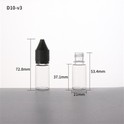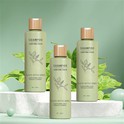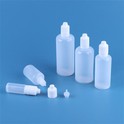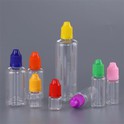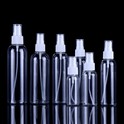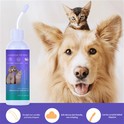The plastic CamelBak bottles displayed in a Target in East Hanover, N.J., offer a promise to ecologically conscious buyers. On the front of each is a bright blue sticker with the words "Tritan Renew made with 50% recycled material."<br>
In reality, however, the amount of recycled plastic that went into making the bottles may be nowhere near 50 percent.<br>
Eastman Chemical, a company with $9.2 billion in annual revenues based in Kingsport, Tenn., introduced the durable plastic called Tritan Renew four years ago, telling manufacturers that it was made with "up to 50 percent recycled content from waste plastic." It quickly caught on with companies trying to reach their sustainability goals or eager to appeal to consumers who want to keep plastics out of landfills and oceans.<br>
Dozens of brands now use the material. CamelBak and Nalgene use it in sports water bottles. Ferragamo offers Tritan Renew sunglasses. Stanley Black & Decker even made a new power tool line called Reviva from the plastic. But there is no guarantee that any particular bottle, pair of sunglasses or power tool actually contains recycled plastic.<br>
"It could be a very low percentage that is physically in there; it could be a high percentage," said C. Jason Pierce, a senior technical leader for the Circular Economy and Life Cycle Assessment at Eastman Chemical, when asked this spring about the amount of recycled plastic in Tritan Renew that is used to make water bottles sold by CamelBak and others. "You can't know how much."<br>
So how does Eastman make its claim that Tritan Renew contains up to 50 percent recycled material? It uses a green certification system called "mass balance."<br>
That methodology allows companies like Eastman to build up credits for recycling plastic and then apply them to the manufacture of any number of products, regardless of how much recycled material they contain. (More on this later.)<br>
Critics argue that mass balance accounting opens the door to corporate greenwashing and creates a system where consumers don't know whether or how much recycled material was used in products that claim to be sustainable or "green."<br>
"If you divorce the recycled content from the physical product, and just start using these accounting schemes, you destroy consumer confidence in recycling," said Lee Bell, a policy adviser to the International Pollutants Elimination Network, a global network of advocacy groups that works on pollution issues. "It effectively destroys truth in labeling."<br>
That view, the company argues, takes too narrow a perspective. Consumers can be assured "that they are directly supporting recycling that really did happen," Mr. Pierce said. "Materials that would have otherwise gone to the landfill or incinerator are being recycled. It's just a little bit of a different way of thinking about recycling. More of a bigger picture or systems view of it."<br>
The proliferation of plastic waste - more than 400 million metric tons a year globally - has led to calls to produce less plastic, which is derived from petrochemicals, or to recycle more. But plastics are much more challenging to recycle than metal or paper. Despite the chasing-arrows symbol on most plastics in the United States, only a few types, those with the number 1 or 2 on them, are reliably recycled in most parts of the country.<br>
Less than 10 percent of plastic waste is recycled, and the vast majority ends up in landfills, incinerated or in the world's oceans and rivers. All of which has created a new pressure - and an opportunity - for the makers of plastics, like Eastman.<br>

